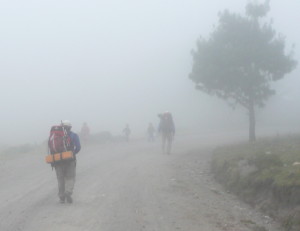
On our recent trip to Portugal, I debated whether or not to bring along Julie’s digital SLR. It’s bulky and I like how easy travel photography is with our little Canon A590IS. It takes decent photos and I can often whip it out for a quick, candid shot without calling too much attention to myself.
On the other hand, the Pentax SLR takes much better photos, with richer colors and more control over depth of field. I decided to bring it along.
When we got to Lisbon, I immediately regretted bringing it because I didn’t want to lug it around. But in the end, I felt that the quality of the photos made up for the hassle.
Many people these days don’t even bother with traditional cameras, using their cell phones instead. Which can be convenient and many cell phone cameras aren’t really any worse than a lot of the digital compacts.
However, nothing is goofier than someone holding up a tablet to take a photo. I had never seen this until our trip to Europe, and it made me laugh every time. And I thought I looked nerdy with an SLR strung around my neck!
Anyway, it’s usually not the camera that makes or breaks a good travel photo opportunity. Here are some ways you can add a little oomph and interest to your shots.
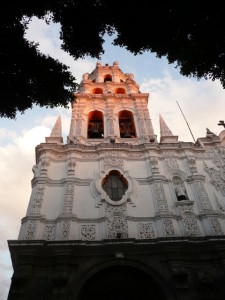
1) Light is your friend and your enemy.
Instead of just looking at your subject, look at how the light interacts with your subject.
If you move a few feet to the left or right, can you use a shadow to create a great silhouette or frame a lit scene? Or is the shadow going to hide someone’s face? Be aware of backlighting when you’re taking that photo of your partner in front of the fountain or on the beach. You may want to turn them to face toward the sun, or use a flash.
I always think in terms of the light “painting” my subject for me. In fact, it’s often the lighting that causes me to pull out my camera.
That’s why I like to take advantage of the golden hours of sunrise and sunset. The low angle of the sun creates such rich lighting for outdoor scenes. This is a good time to take photos of harbors, ruins and landscapes.
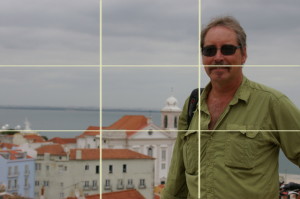
2) Take a second to compose the shot.
Just a little effort in framing a shot can go a long way in making an interesting photo.
Although there are shots that work well with the subject centered, it’s better to keep to the Rule of Thirds. This is a basic photography skill where you imagine your scene divided into three sections horizontally and three sections vertically.
Where the lines for those sections intersect, is where you want to position your main subject. This creates a more balanced image that naturally draws the viewer’s eye to your subject. It may take some practice to think this way, but it will become second nature after awhile.
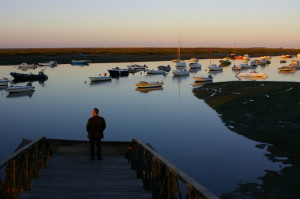
I also like to look for lines or some other element that pull you into the scene, such as a curving wall or path. Be careful of elements that can ruin a shot, like a telephone pole sprouting from someone’s head.
3) Look for moments of human interaction.
For me the most interesting travel photos include people, especially candid photos of humans being humans.
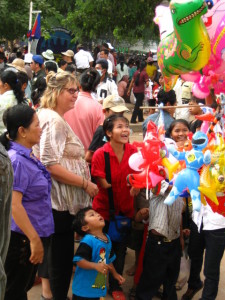
Sure you can take a photo of your wife in front of the Fontaines de la Concorde, with her arms folded and a forced smile. That’s a tourist photo. Now keep the camera out and take a few shots when she’s wandering around and admiring the fountains instead of looking at you. That’s a travel photo.
It gets even better when you document interactions with the locals. This can get tricky because you don’t want to offend someone by taking their photo without permission. And if you ask their permission, you may get a yes and then a posed shot. Many times they won’t give you that posed shot without a little money. I’ve certainly paid up and have asked the person to keep doing what they were doing, but at that point they are self conscious.
In the Bahamas, I asked a woman who was singing while weaving a basket if I could take her photo. It cost me $5 bucks (everything is expensive in the Bahamas!) but she went right back to weaving and singing until I had taken three shots. She then looked at me and said decisively, “No more.”
I like to capture people when they’re not self conscious though, so I try to get these shots covertly and hopefully without being an asshole.
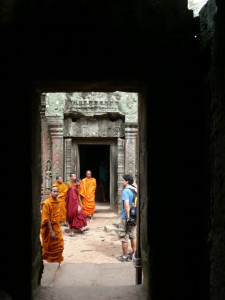
4) Take a lot of shots of the same subject.
Come on man, it’s digital photography! You don’t have to worry about saving film so take a lot of shots and increase the chances of getting a great one. You can always delete the bad ones back at your hotel to free up memory.
5) And finally, be prepared.
There’s nothing more frustrating than seeing a great shot and having to fumble around trying to pull out your camera. By the time you get it out, you’ve attracted attention and may have missed the opportunity. That’s what I like about our little Canon; I can wear it on my hip, usually covered by my shirt, and have it out and shooting in seconds.
Also, practice with your camera just before your trip so you’re not trying to figure out how to turn on the flash or work the zoom just as the shot of a lifetime walks by.
Do you have any favorite travel photography tips? Please share in the comments below.

Leave a Reply